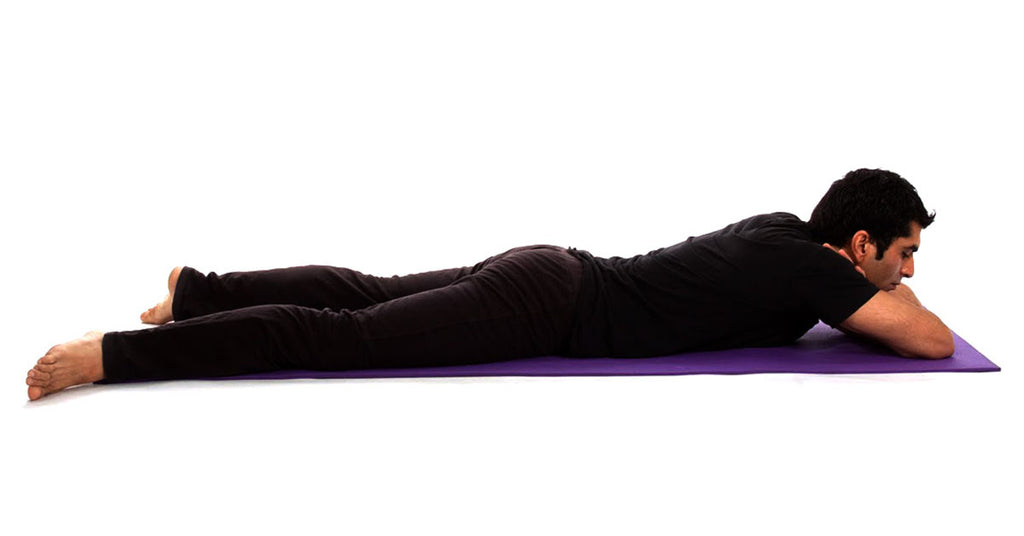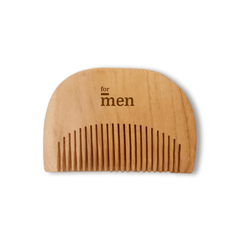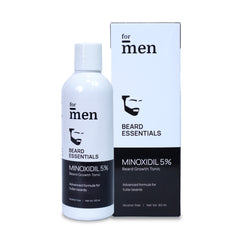10 Best Yoga Poses for Stress and Depression Relief
Evidence Based
All the information in this blog post is accurate, trustworthy, scientifically based and has been written and fact-checked by our experts and doctors.
Our licensed nutritionists and dietitians are committed to being objective, unbiased and honest, presenting all sides of the argument.
This article includes scientific references in brackets, which are clickable links to research papers from reputable academic organizations.

In today’s fast-paced world, stress is inevitable. There is not one soul that it hasn’t touched. Today, some amount of stress is normal, but it becomes a source of concern when it starts interfering with your daily life.
If stress has been getting the best of you, it may be time to look for ways to cope with it. While there are several ways to deal with stress, Yoga has been the most effective method for ages.
Yoga combines physical poses with controlled rhythmic breathing, meditation, and relaxation, all of which contribute towards an improved sense of wellbeing. The regular practice of Yogasanas can help you become flexible, strong, calm, and relaxed and lead a fuller life.
What makes the practice of Yoga desirable over other forms of exercise is that it can be practiced with any level of fitness. Every pose improves blood circulation, slows down your heartbeat, improves mindfulness, and controls your breathing. The postures in Yoga range from simple relaxation poses to stretching, to ones that actively involve every muscle group.
In this article, we have compiled a list of 10 Yogasanas that can help you relieve stress, become mindful, and enjoy a better quality of life.
While we have also described each of the poses and the benefits that can be derived from them, we recommend you to consult with your healthcare professional before you begin and get your vitals checked. If this is your first time practicing Yoga, we would also recommend you to start practicing under the guidance of a certified and experienced Yoga instructor.
Top 10 Yogasanas for Stress Relief
1. Shalabhasana (Locust Pose)

How to do the Shalabhasana?
- Lie flat on the stomach with feet and legs close together.
- Take both your arms behind, towards your legs and tuck them under your body or keep them on the sides with palms facing downwards.
- Stretch the chin slightly in the forward direction and keep it rested on the floor throughout the asana.
- Slowly start lifting both the legs together by putting gentle pressure on your hands, without straining the lower back. Lift your legs as far as you can. Do not fold your knees.
- Hold the pose for a few seconds or as long as you are comfortable. Keep breathing throughout.
- Gently release and bring your legs down.
Shalabhasana Benefits:
It helps relieve stiffness in the lower back and neck muscles by improving blood circulation to the regions.
2. Viparita Shalabhasana (Superman Pose)

How to do the Viparatita Shalabhasana?
- Lie flat on your stomach with your legs and feet close together, touching the floor.
- Rest your chin on the floor.
- Extend both your hands in front of you and rest them on the ground.
- Gently lift your chest, arms, shoulder, legs, and thighs above the ground (fly like Superman). Hold the pose as long as you can.
- Keep your focus on your breath and keep breathing gently throughout the pose.
- Release and bring your hands and legs back to the ground.
Viparatita Shalabhasana Benefits:
Helps with lower back ailments, strengthens the abdomen and back muscles, improves concentration by requiring you to focus to maintain balance and be present in the moment. Stretches the arms, shoulder, chest, legs and improves blood circulation throughout the body.
3. Dhanurasana (Bow Pose)

How to do the Dhanurasana?
- Lie down on your stomach with your legs slightly apart. Place your hands on the sides of your body.
- Slowly fold your knees up and hold your ankles with your hands.
- As you breathe in, lift your chest off the ground and pull your legs up while stretching them outwards.
- Relax into the pose as you take long deep breaths. Feel the stretch in your thighs and arms.
- Hold the pose for as long as you can and slowly come back to the ground before you release your ankles.
Dhanurasana Benefits
This posture stretches the whole body and opens up your shoulders, chest, and neck. It helps to relieve headaches, stress, reduce depression as well as anxiety.
4. Makarasana (Crocodile Pose)

How to do the Makarasana?
- Lie down flat on your stomach with your legs close to each other but relaxed.
- Bring both your hands in front of your head and place them one over the other.
- Slowly lift your head and shoulders and place your forehead on the cradle formed by your hands.
- Rest your shoulders, neck, and arms and relax in the pose while breathing gently.
- Lie down for a few breaths and release by gently lifting your head.
Makarasana Benefits
Reduces the impact on the respiratory system by lowering oxygen requirements. It strengthens the back muscles, the abdomen, digestive system, and sexual organs even while you relax.
5. Naukasana (Boat Pose)

How to do the Naukasana?
- Lie down flat on your yoga mat with legs close together and palms by the sides of your body.
- Slowly lift your legs, hands, shoulders, and neck while looking upwards. All your weight should be on your buttocks, and your eyes, hands, and legs should be along one line.
- Try to keep your back straight while not putting a strain on your lower back.
- Hold the pose for a few seconds or as long as comfortable.
- Slowly release from the posture and go back to the mat and relax.
Naukasana Benefits
This pose helps you release stress by increasing blood circulation and requiring you to mindfully stay in the pose. It helps strengthen back muscles, abdominal muscles, legs, neck, and shoulder. You can also lose stomach fat by practicing this pose regularly along with other Yogasanas. Another benefit that you can derive from Naukasana is that it can help release gas, constipation, and improve digestive processes.
6. Pawanmuktasana (Wind-Relieving Pose)

How to do the Pawanmuktasana?
- Lie down on your back with your palms on the sides of your body.
- Take a deep breath and bring your knees close to your chest. Place your hands around your knees and pull them close to your chest.
- If comfortable, you can gently rock side to side as this gives a gentle massage to the back.
- Hold for a few seconds or as long as comfortable and slowly release your knees.
- Keep breathing even when you hug the knees and bring them close.
- Instead of bringing both knees together, you can also do this pose with one knee at a time, known as Ardha Pawanmuktasana.
Pawanmuktasana Benefits
This pose can not only help release excessive gas trapped in the digestive system and improve digestive processes but can also aid with weight loss, binge eating, and better bowel movements. It also aids in releasing any tension in the lower back region.
7. Bhujangasana (Cobra Pose)

How to do the Bhujangasana?
- Lie down on your stomach with your legs and feet close with toes gently touching
- Bring your palms next to your shoulders.
- With elbows close to your body, gently lift your shoulders, chest, and trunk off the ground. Keep your stomach pressed to the ground and apply all the pressure on your palms.
- Arch your neck slightly without straining it and look up towards the ceiling and keep breathing gently.
- Relax into the pose for as long as you can. Slowly fold your elbows and come back to the mat.
Bhujangasana Benefits
This Yogasana helps open up your chest, neck, and shoulders and strengthen your arms and lower back. Bhujangasana can quickly improve your mood and relieves stress by increasing the flow of oxygen to your lungs and brain.
8. Natrajasana (Lord of the Dance Pose)
How to do the Natrajasana?
- Stand up tall and relax in the Mountain Pose with your feet firmly planted on the ground and your weight equally distributed.
- Fold your right knee backward and hold your foot with your right hand. Gently apply pressure to the sole of your foot with your thumb and start stretching the leg upward.
- Simultaneously bring your left hand in front of your body and bring it up to balance yourself.
- Relax in the pose by breathing mindfully and gaze at one point anywhere on the floor or wall for support.
- Hold the pose as long as you feel comfortable but do not strain your knee while stretching the leg in your hand.
- To release, bring the hand in front down while you also release the stretch of the other knee. Come back to Mountain Pose.
Natrajasana Benefits
This dancing pose involves all the muscles of the body, improves concentration and mindfulness while maintaining balance, strengthens and tones your legs, hips, arms, back, and abdomen. Practicing this pose regularly can help develop a feeling of balance, coordination, and being in control.
9. Sarvangasana (Shouldertsand or Supported Shoulderstand)

How to do the Sarvangasana?
- Lie down on the yoga mat with your hands next to your body.
- Gently raise your legs to form a 90-degree angle.
- Place your hands on your lower back and slowly lift your legs while taking the support of your hands.
- Be very mindful during this pose and go through the pose slowly so that you do not injure your neck.
- Breathe gently and relax into the pose comfortably. Hold the pose for a few seconds and then gently lower your legs with your hands still providing support until you come back to the mat and can lay on your back.
Sarvangasana Benefits
This Yogasana helps reduce fatigue, anxiety, depression, and stress by stretching and strengthening the neck, shoulder, and arms. This pose tones your abdomen, legs, and buttocks and also requires you to be mindful so that you can balance yourself.
10. Savasana (Corpse Pose)

How to do the Savasana?
- Lie flat on your back with your legs slightly apart and relaxed. Your palms must face upwards and be relaxed.
- Close your eyes and focus on your breath. Focus on every part of your body starting from the top of your head moving towards your feet.
- Relax in the pose until you reach a state of complete relaxation.
Savasana Benefits
This pose can help you relax after long tiring workouts or just release stress by mindfully laying down and paying attention to the sensations in the body and your breath. It helps you move from a state of stress to one of complete relaxation.
If you practice these Yogasanas regularly, it can help you reduce stress significantly while also reaping several other health benefits. Ensure that you practice these postures mindfully with complete awareness and maintain correct posture.
In case of any discomfort, do not continue further and immediately take a rest. Consult your healthcare provider if you feel you might have injured yourself.
Along with the regular practice of Yoga, some other lifestyle changes like including natural foods in your diet, eliminating sugar and fast food, staying hydrated, and practicing gratitude can help you eliminate stress to a certain extent from your life.
You might not be able to avoid stressful situations, but with this overall sense of wellbeing and wholeness, you will be in a better position to deal with everything that comes your way.
Also Read the Articles:
Disclaimer: The information provided on this page is not a substitute for professional medical advice, diagnosis, or treatment. If you have any questions or concerns about your health, please talk to a healthcare professional.

 Evidence Based
Evidence Based






Leave a comment